Apigenin
Synonym(s):4ʹ,5,7-Trihydroxyflavone;4′,5,7-Trihydroxyflavone;5,7-Dihydroxy-2-(4-hydroxyphenyl)-4-benzopyrone;Apigenin;Apigenin - CAS 520-36-5 - Calbiochem
- CAS NO.:520-36-5
- Empirical Formula: C15H10O5
- Molecular Weight: 270.24
- MDL number: MFCD00006831
- EINECS: 208-292-3
- SAFETY DATA SHEET (SDS)
- Update Date: 2025-12-27 15:38:00
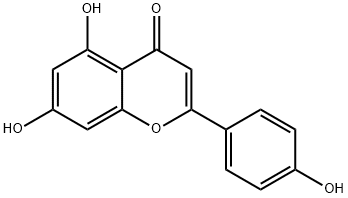
What is Apigenin?
Chemical properties
Pale Yellow Crystalline Solid
The Uses of Apigenin
Apigenin is an active antioxidant, anti-inflammatory, anti-amyloidogenic, neuroprotective and cognitive enhancing substance with interesting potential in the treatment/prevention of Alzheimer's disease.
The Uses of Apigenin
Apigenin has been shown to possess antibacterial, antiviral, antifungal, and antiparasitic activities. Although it can’t stop all types of bacteria on its own, it can be combined with other antibiotics to increase their effects.
The Uses of Apigenin
Apigenin is a promising reagent for cancer therapy. Apigenin appears to have the potential to be developed either as a dietary supplement or as an adjuvant chemotherapeutic agent for cancer therapy.
What are the applications of Application
Apigenin is an antiinflammatory flavonoid compound casein kinase II inhibitor found in many fruits and vegetables.
Preparation
4-hydroxybenzaldehyde (1.22 g, 9.97 mmol, 1.0 equiv) was added to asolution of 50% KOH (aq.) (6.72 g, 59.82 mmol, 6.0 equiv) and ethanol (3 mL) andstirred for 10 min. Then compound 9 (2.02g, 9.97 mmol, 1.0 equiv) was added to the reaction mixture and heated to 60 °C and stirred for 4 h. After cooled toroom temperature, the mixture was poured into ice water and acidified withconcentrated hydrochloric acid to pH = 3. Then the suspension was filtrated, washed and the residue was dried toafford Apigenin(2.43 g, 90%) as a red solid. 
Definition
ChEBI: Apigenin is a trihydroxyflavone that is flavone substituted by hydroxy groups at positions 4', 5 and 7. It induces autophagy in leukaemia cells. It has a role as a metabolite and an antineoplastic agent. It is a conjugate acid of an apigenin-7-olate.
Benefits
Apigenin has various beneficial health effects such as antioxidant, anti-inflammatory, and chemoprevention. Apigenin can downregulate the expression of IL-1β and TNF-α in LPS-stimulated mouse macrophages and human monocytes. preclinical studies have suggested that apigenin may improve outcomes in multiple health states, including anxiety, brain function, oxidative stress, inflammation, and hormonal regulation (testosterone, estrogen, and cortisol
Mechanism of action
Apigenin exerts anxiolytic effects at high doses by inhibiting NMDA receptors; it also has affinity to GABA-A receptors. Apigenin also exerts potent antioxidant activities by scavenging free radicals and upregulating glutathione levels; it also exerts anti-inflammatory effects. Apigenin is most studied for its potential anti-cancer properties.
Anticancer Research
It induces apoptosis by targeting leptin/leptin receptor pathway and by targeting caspase-dependent extrinsic pathway aswell as STAT3 signaling pathway in lung adenocarcinoma and BT-474 breast cancercells, respectively.
It shows antitumor activity against breastcancer MCF-7 cells and colon cancer HCT 116 cells and is a mediator of cancerchemoprevention and an inducer of autophagy. It can be used to treat colon canceras it induces apoptosis in colon cancer cells. It also increase melanogenesis in B16cells by activating the p38 MAPK pathway.
Safety
Apigenin is considered safe when consumed in normal amounts through a diet rich in fruits, vegetables, and herbs. However, supplement doses tend to deliver a significantly higher amount of apigenin than would be generally consumed via dietary means. Higher doses of apigenin can cause stomach discomfort, and people should cease using it immediately and consult medical professionals. At high doses, it can trigger muscle relaxation and sedation[1]. Allergic reactions can also occur as a response to chamomile tea or apigenin.
Source
Apigenin (4′,5,7-trihydroxyflavone) is one of the most widespread flavonoids in plants and formally belongs to the flavone sub-class. Plants belonging to the Asteraceae, such as those belonging to Artemisia, Achillea, Matricaria, and Tanacetum genera, are the main sources of this compound. However, species belonging to other families, such as the Lamiaceae, for instance, Sideritis and Teucrium, or species from the Fabaceae, such as Genista, showed the presence of apigenin in the aglycone form and/or its C- and O-glucosides, glucuronides, O-methyl ethers, and acetylated derivatives. In gymnosperms, apigenin derivatives are mostly present in dimeric forms, with apigenin residues variously coupled, e.g., with C?C linkage as in cupressuflavone and amentoflavone (I-8, II-8″ and I-3′, II-8″, respectively), or C—O linkage (I-4′, II-6″) as in hinokiflavone.
Storage
+4°C
Purification Methods
The current method for the purification of apigenin is crude-solvent extraction method by using solvent in small quantity and also time saving. Apigenin that was isolated from Symphyotrichum novae-angliae was obtained in large quantity and directly from extract.
References
[1] Bahare Salehi, et al. “The Therapeutic Potential of Apigenin.” Int J Mol Sci. 2019 Mar; 20(6): 1305.
Properties of Apigenin
| Melting point: | >300 °C (lit.) |
| Boiling point: | 333.35°C (rough estimate) |
| Density | 1.2319 (rough estimate) |
| refractive index | 1.6000 (estimate) |
| storage temp. | 2-8°C |
| solubility | DMSO: 27 mg/mL |
| pka | 6.53±0.40(Predicted) |
| form | powder |
| color | yellow |
| Merck | 14,730 |
| BRN | 262620 |
| Stability: | Stable for 1 year from date of purchase as supplied. Solutions in DMSO may be stored at -20°C for up to 1 month. |
| InChI | InChI=1S/C15H10O5/c16-9-3-1-8(2-4-9)13-7-12(19)15-11(18)5-10(17)6-14(15)20-13/h1-7,16-18H |
| CAS DataBase Reference | 520-36-5(CAS DataBase Reference) |
Safety information for Apigenin
| Signal word | Warning |
| Pictogram(s) |
 Exclamation Mark Irritant GHS07 |
| GHS Hazard Statements |
H315:Skin corrosion/irritation H319:Serious eye damage/eye irritation H335:Specific target organ toxicity, single exposure;Respiratory tract irritation |
| Precautionary Statement Codes |
P261:Avoid breathing dust/fume/gas/mist/vapours/spray. P264:Wash hands thoroughly after handling. P264:Wash skin thouroughly after handling. P280:Wear protective gloves/protective clothing/eye protection/face protection. P304+P340:IF INHALED: Remove victim to fresh air and Keep at rest in a position comfortable for breathing. P305+P351+P338:IF IN EYES: Rinse cautiously with water for several minutes. Remove contact lenses, if present and easy to do. Continuerinsing. P405:Store locked up. |
Computed Descriptors for Apigenin
| InChIKey | KZNIFHPLKGYRTM-UHFFFAOYSA-N |
| SMILES | C1(C2=CC=C(O)C=C2)OC2=CC(O)=CC(O)=C2C(=O)C=1 |
Apigenin manufacturer
New Products
4,4-Difluoropiperidine hydrochloride tert-butyl 9-methoxy-3-azaspiro[5.5]undecane-3-carboxylate Indole Methyl Resin N-Isopropylurea N,N-Dicyclohexylcarbodiimide(DCC) MELDRUMS ACID 5-METHYLISOXAZOLE-4-CARBOXYLIC ACID Magnessium Bis glycinate Zinc ascorbate 1-bromo-2-butyne 2-acetamidophenol 9(10H)-anthracenone Erythrosin B, 4-Piperidinopiperidine 2-((4-morpholinophenylamino) (methylthio) methylene) malononitrile 2,4-dihydroxybenzaldehyde 3-(4-morpholinophenylamino)-5-amino-1H-pyrazole-4-carbonitrile Methyl 2-methylquinoline-6-carboxylate 2,6-dichloro-4-nitropyridine 4-Bromo-2-chlorobenzonitrile 2-(benzylamino)acetic acid hydrochloride 4-(tert-Butoxycarbonylamino)but- 2-ynoic acid 3,4-dihydro-2H-benzo[b][1,4]dioxepine 1-Phenyl-1-cycloprppanecarboxylicacidRelated products of tetrahydrofuran
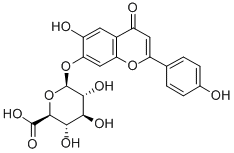

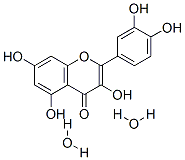
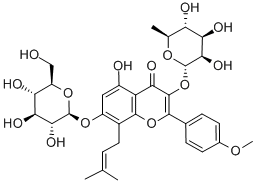

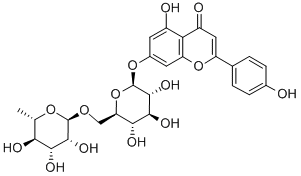


You may like
-
 Apigenin supplier High purity and qualityView Details
Apigenin supplier High purity and qualityView Details
520-36-5 -
 4',5,7-Trihydroxyflavone CAS 520-36-5View Details
4',5,7-Trihydroxyflavone CAS 520-36-5View Details
520-36-5 -
 Apigenin CAS 520-36-5View Details
Apigenin CAS 520-36-5View Details
520-36-5 -
 Apigenin, for HPLC 98% CAS 520-36-5View Details
Apigenin, for HPLC 98% CAS 520-36-5View Details
520-36-5 -
 Apigenin 97% CAS 520-36-5View Details
Apigenin 97% CAS 520-36-5View Details
520-36-5 -
 Apigenin CAS 520-36-5View Details
Apigenin CAS 520-36-5View Details
520-36-5 -
 Apigenin CAS 520-36-5View Details
Apigenin CAS 520-36-5View Details
520-36-5 -
 Apigenin CAS 520-36-5View Details
Apigenin CAS 520-36-5View Details
520-36-5
